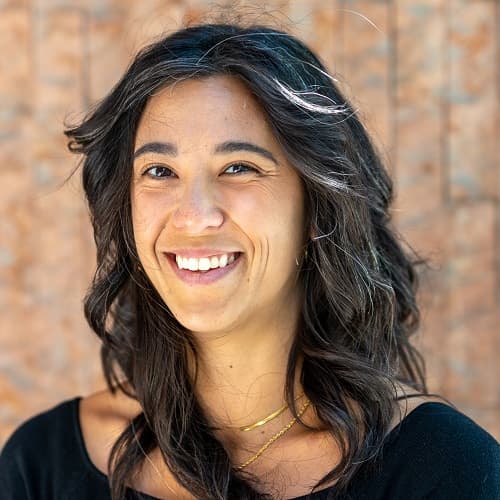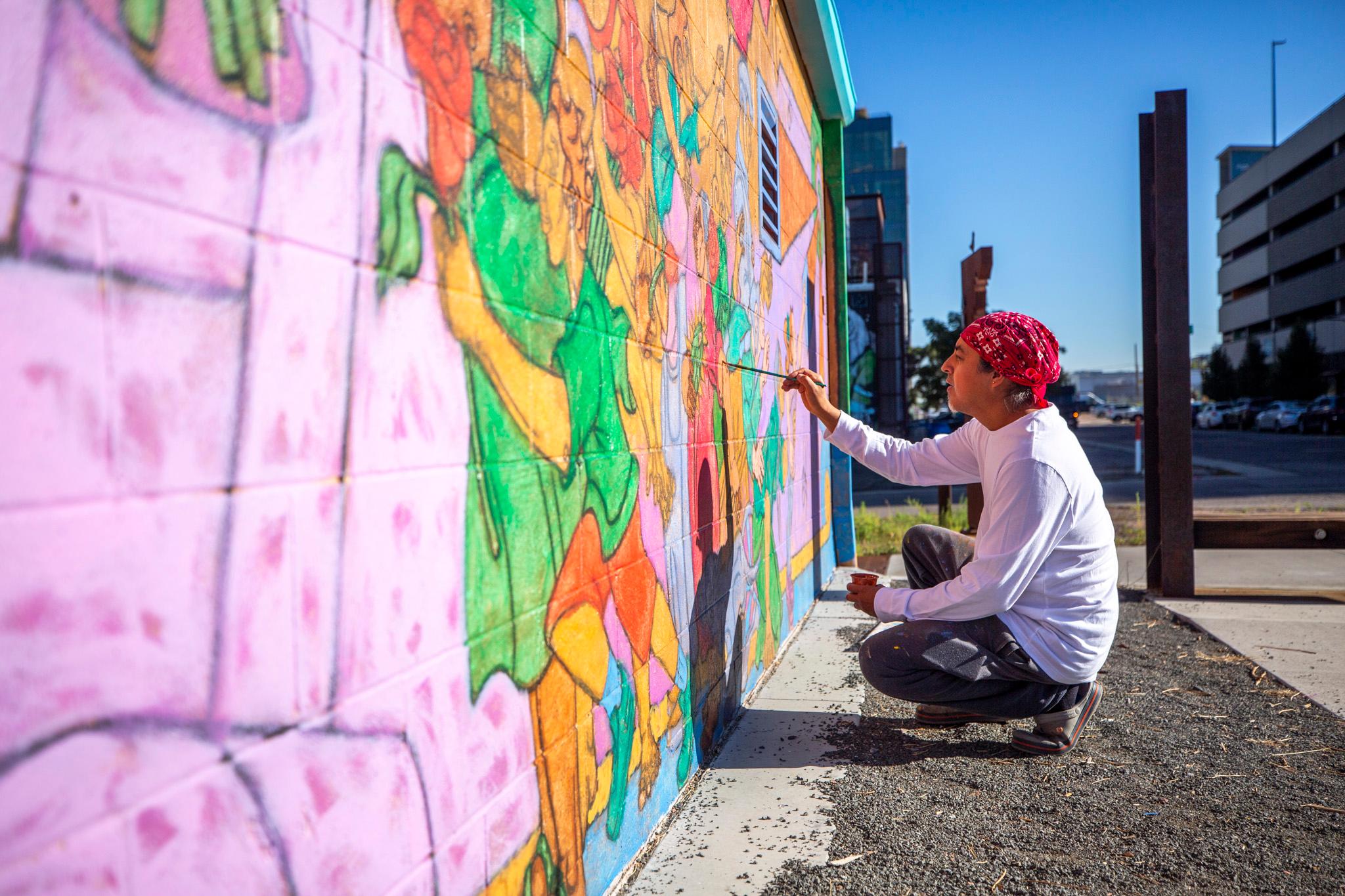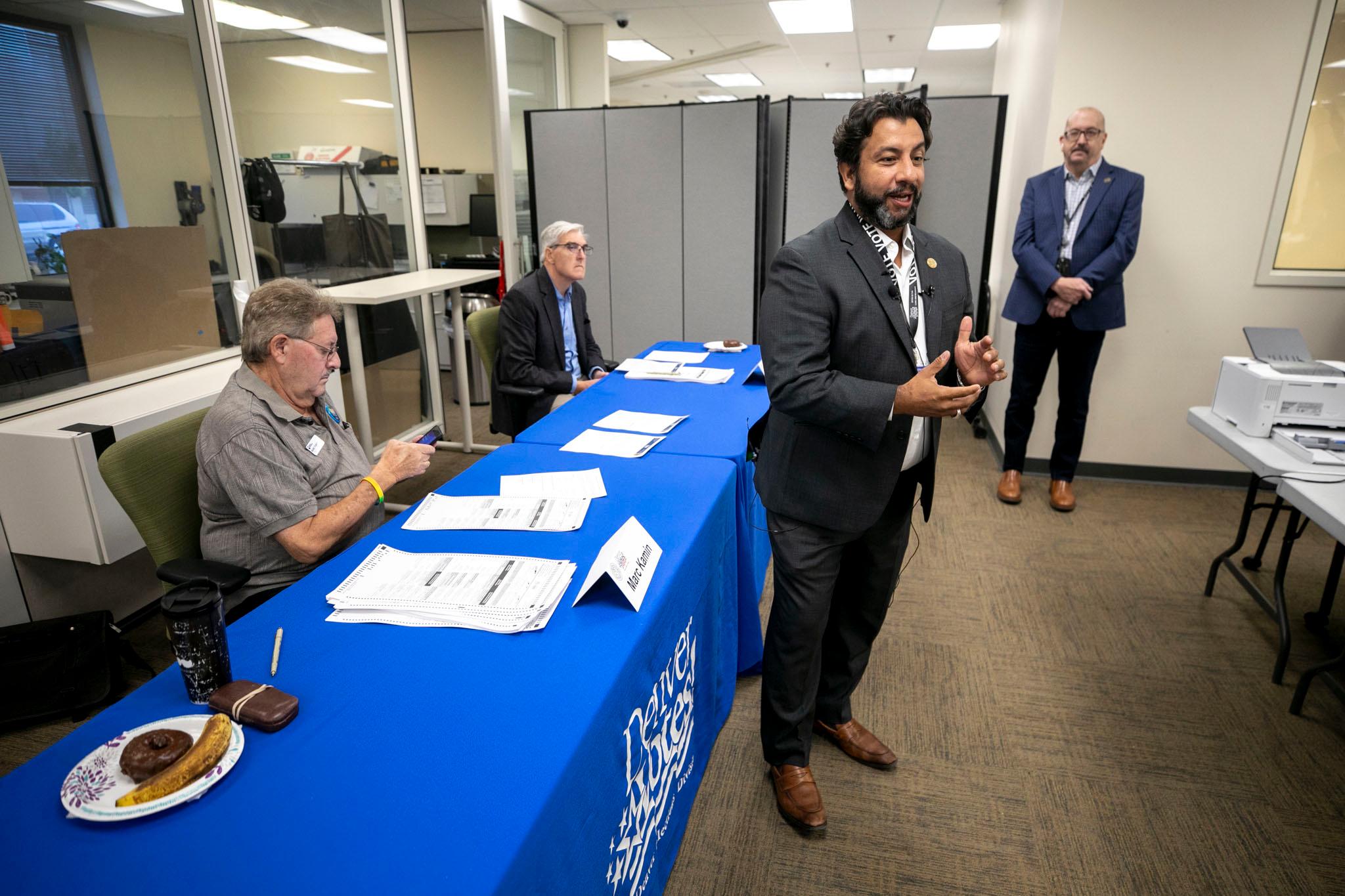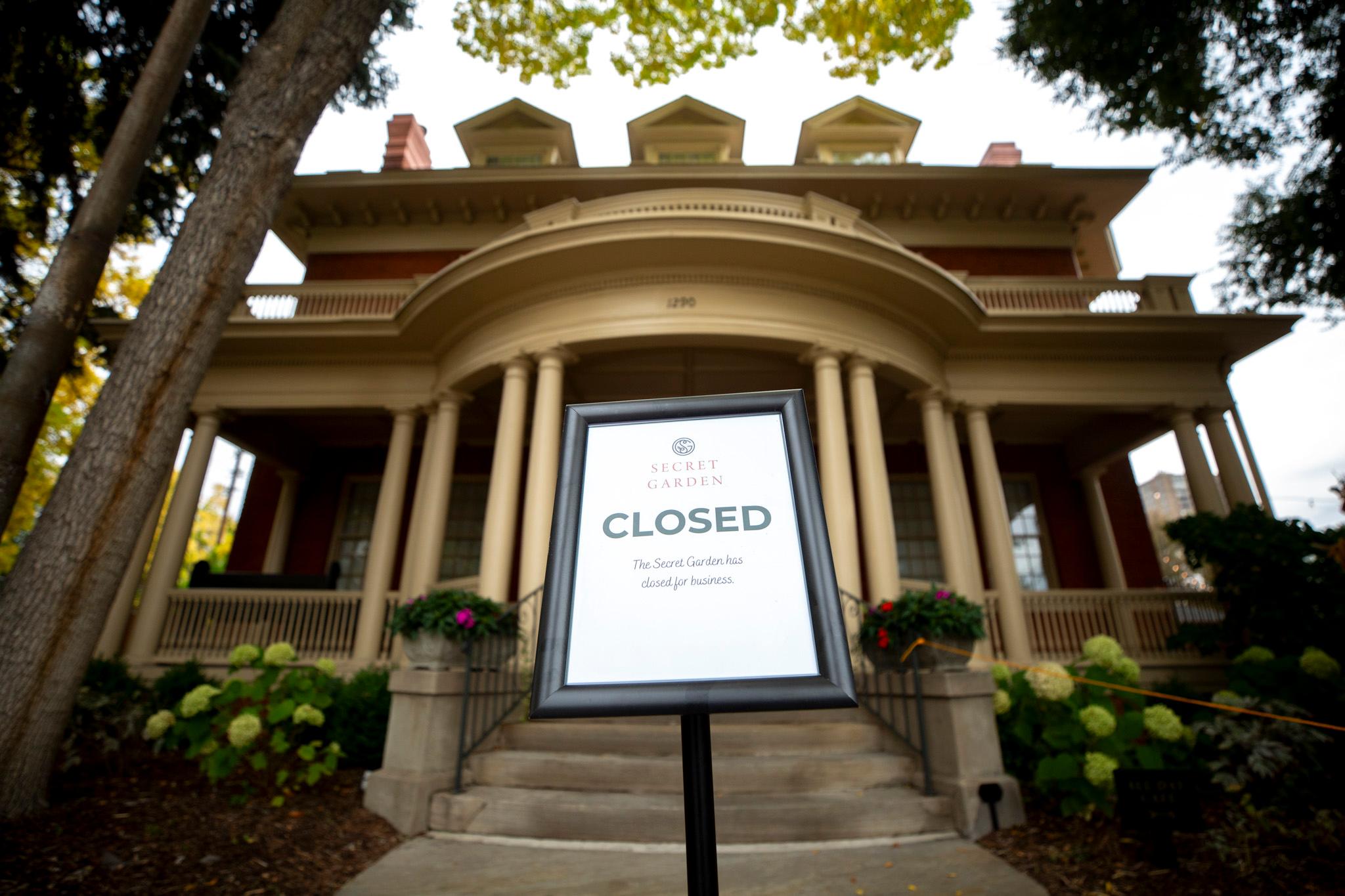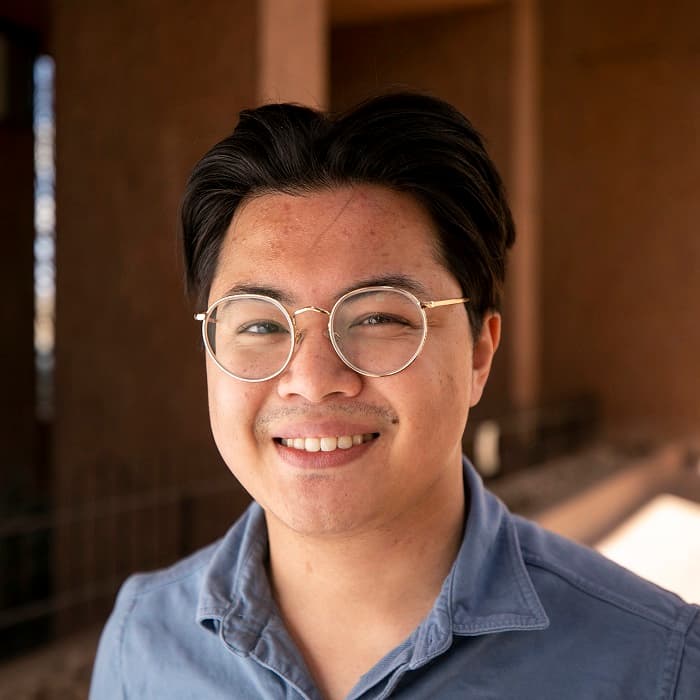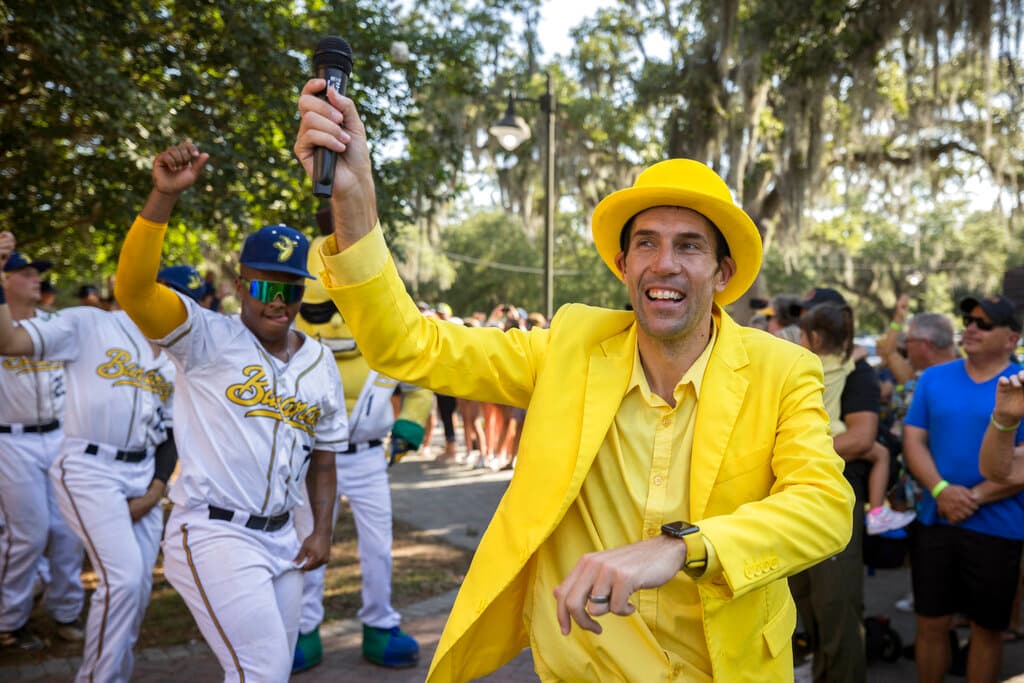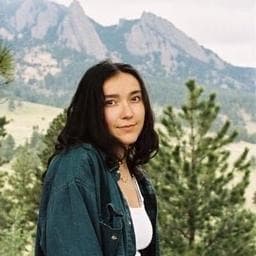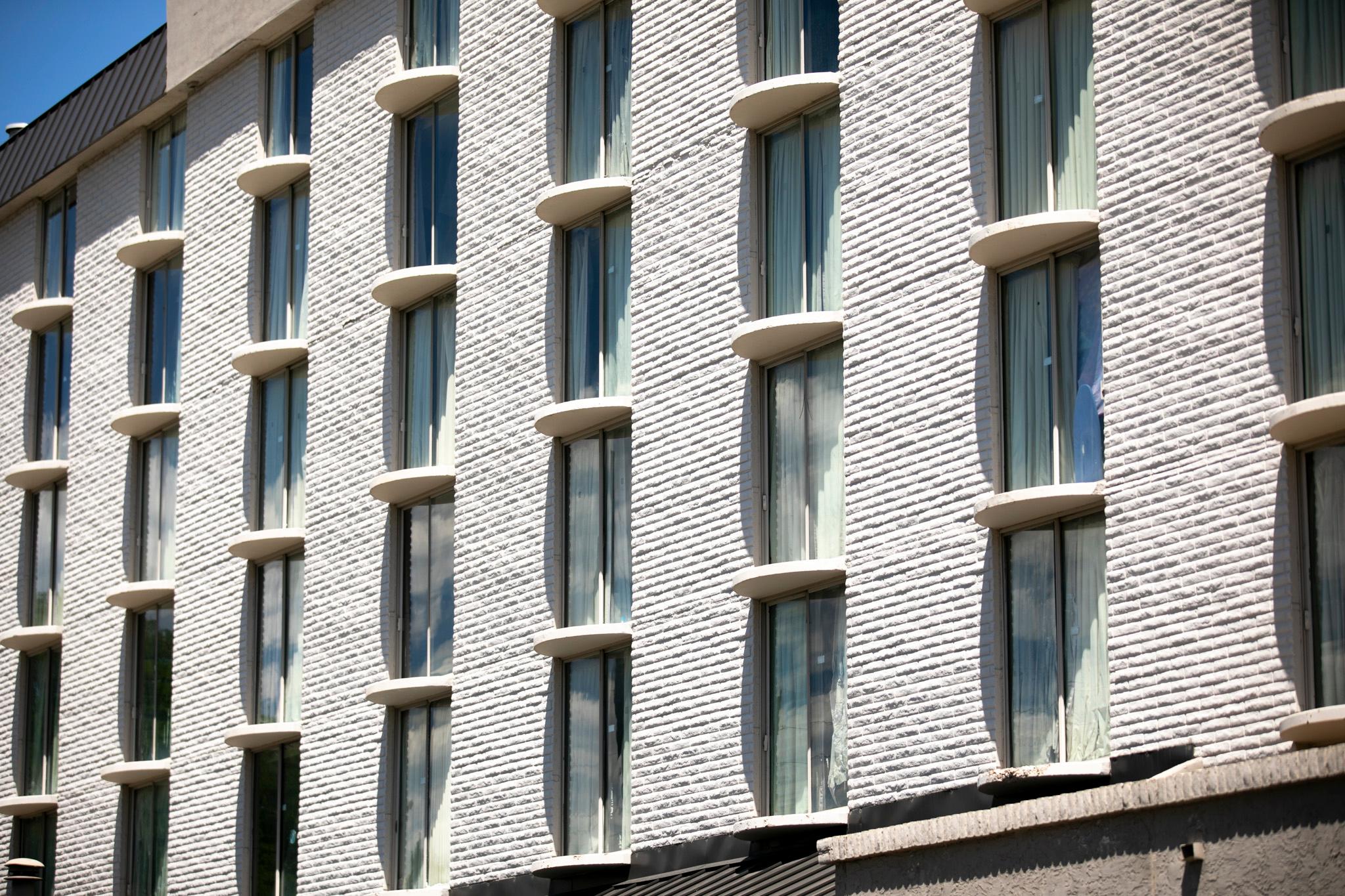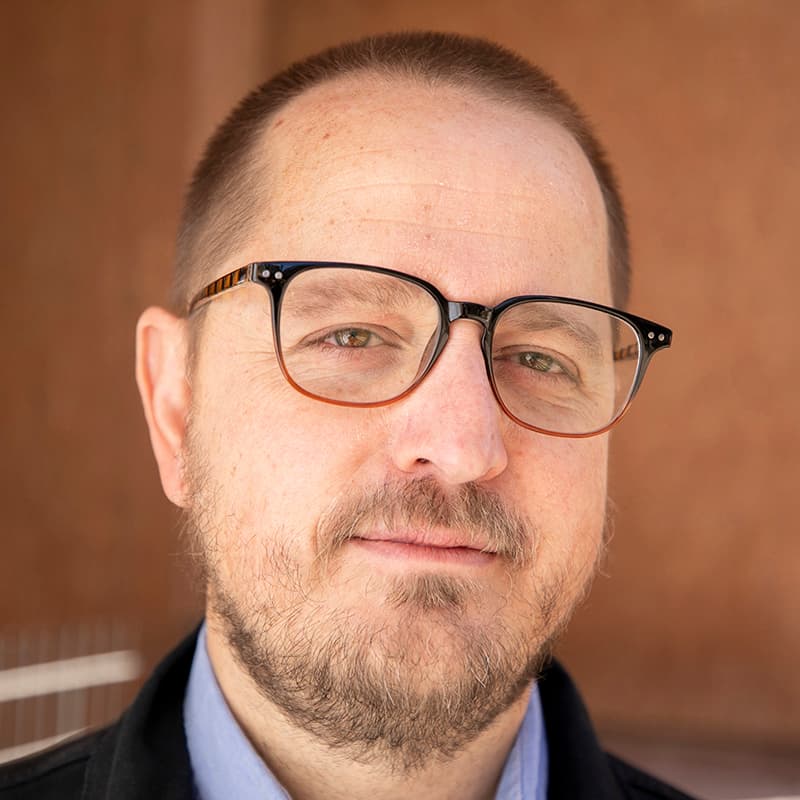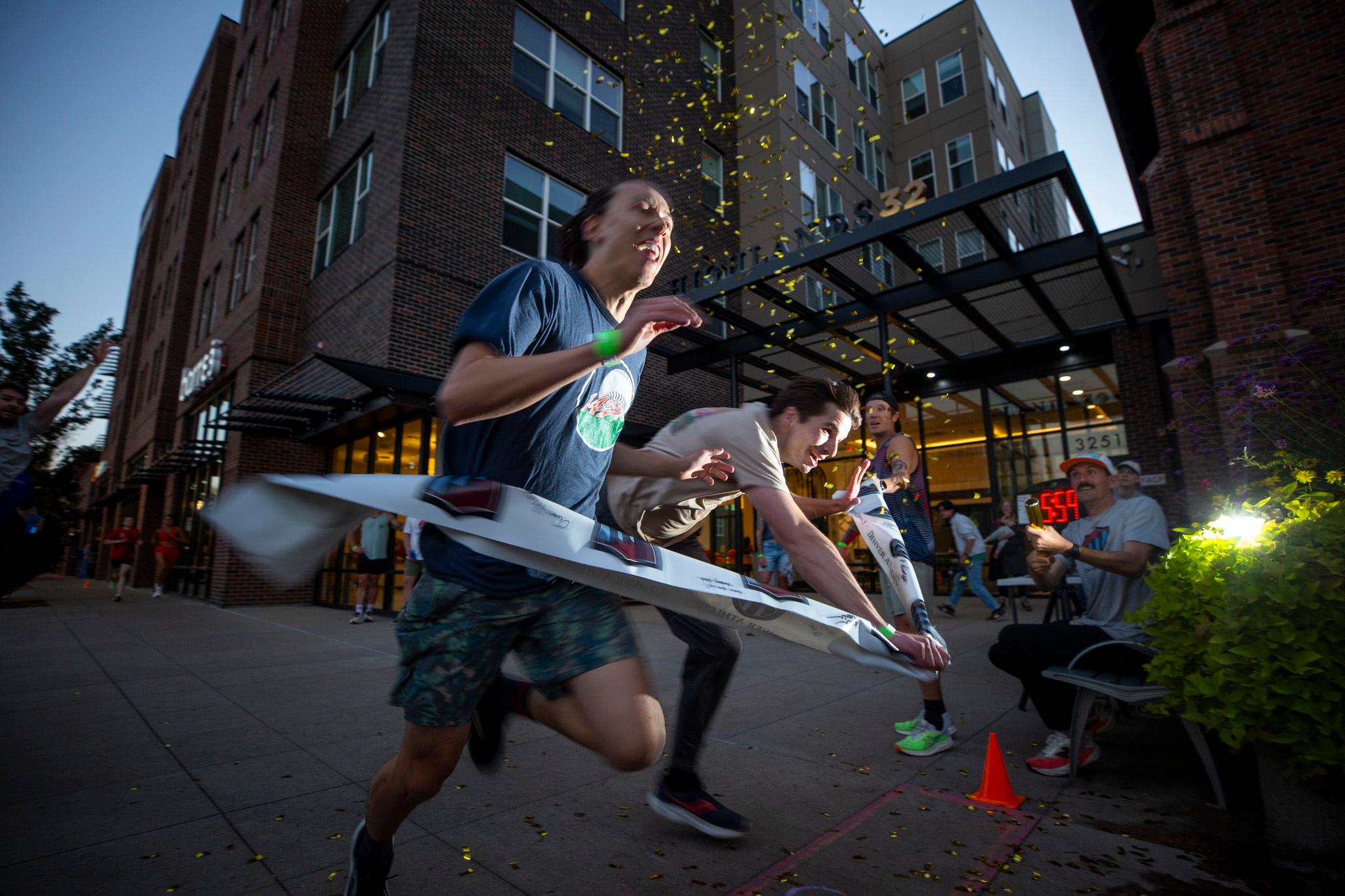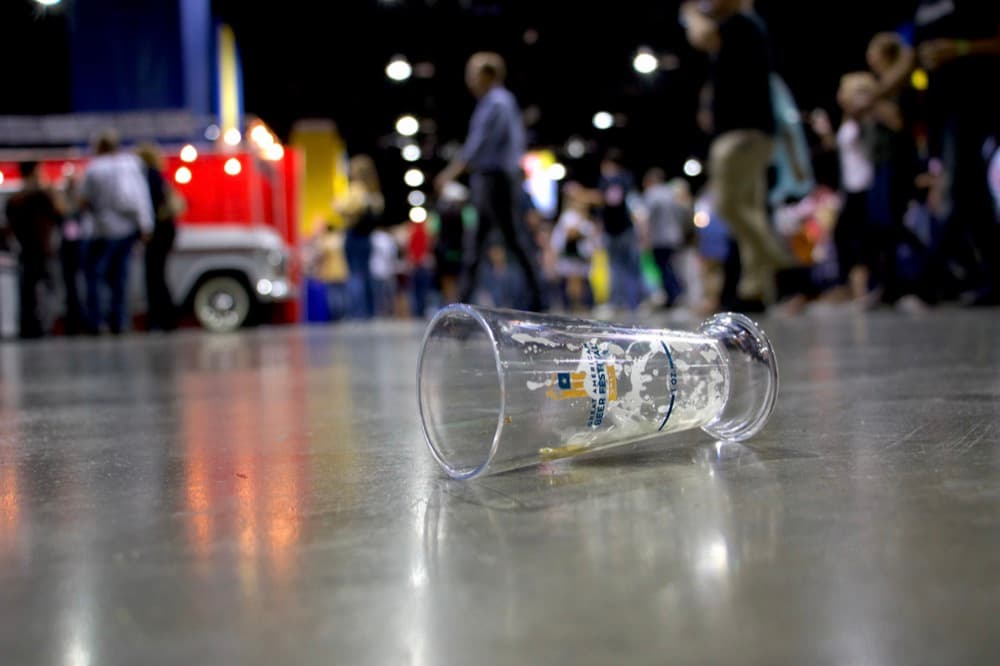There’s a fundamental debate in street art: Should murals be temporary or permanent?
It’s a debate where there’s often no straightforward answer.
But as the art form’s reputation has evolved in the current zeitgeist – moving from “vandalism” to “public art” – it’s also become more regulated.
Now, many murals come with contracts that state how long the work will be on display before it has the potential to be replaced.
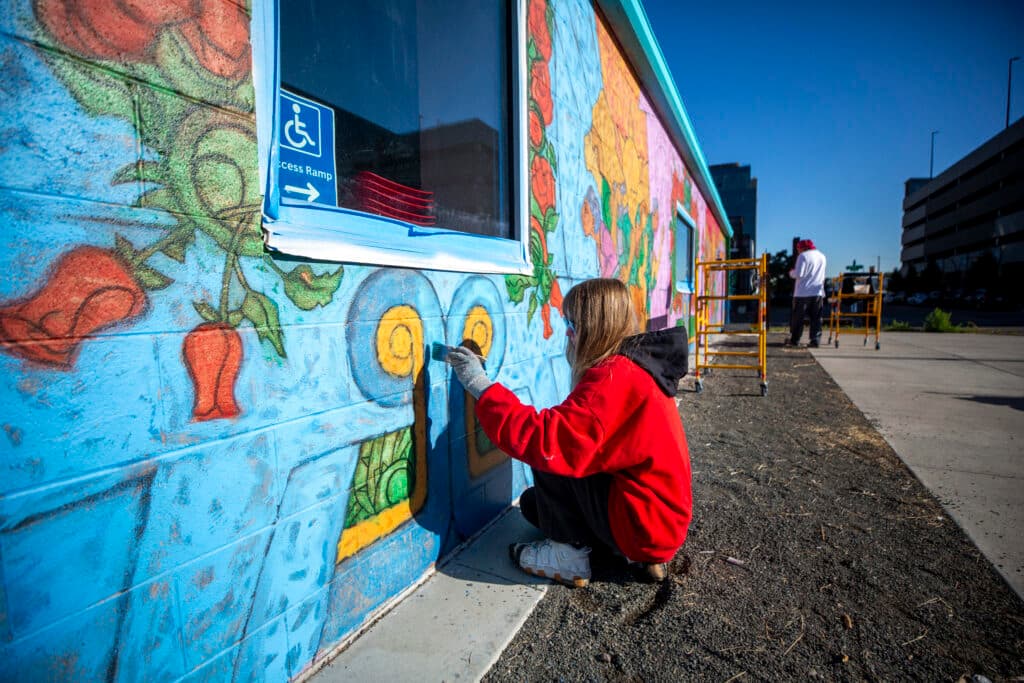
This type of contract was put into place when David Ocelotl Garcia’s “El Milagro,” or “The Miracle,” was painted on the Bob Ragland Library in RiNo Art Park in 2021.
The only problem was, he didn’t know there was a contract. Or, at least, he didn’t know the contract came with an end date.
So “El Milagro” met what felt like an untimely end last year. But in a time and place where street art moves fast and commodity often rises above community, another miracle happened.
The birth of a community mural
In 2021, a now-defunct health care technology startup called Olive funded a mural for Denver’s Tepeyac Health Clinic.
The clinic is a nonprofit community health center that has provided affordable and accessible care to underserved communities since 1995. It began in Globeville and is now based a mile and a half northeast of the RiNo Art Park in Elyria Swansea.
The Miracle of Tepeyac, also known as the Miracle of Our Lady of Guadalupe, is a story about Juan Diego Cuauhtlatoatzin, who received a vision of Our Lady of Guadalupe on Tepeyac Hill near modern-day Mexico City.
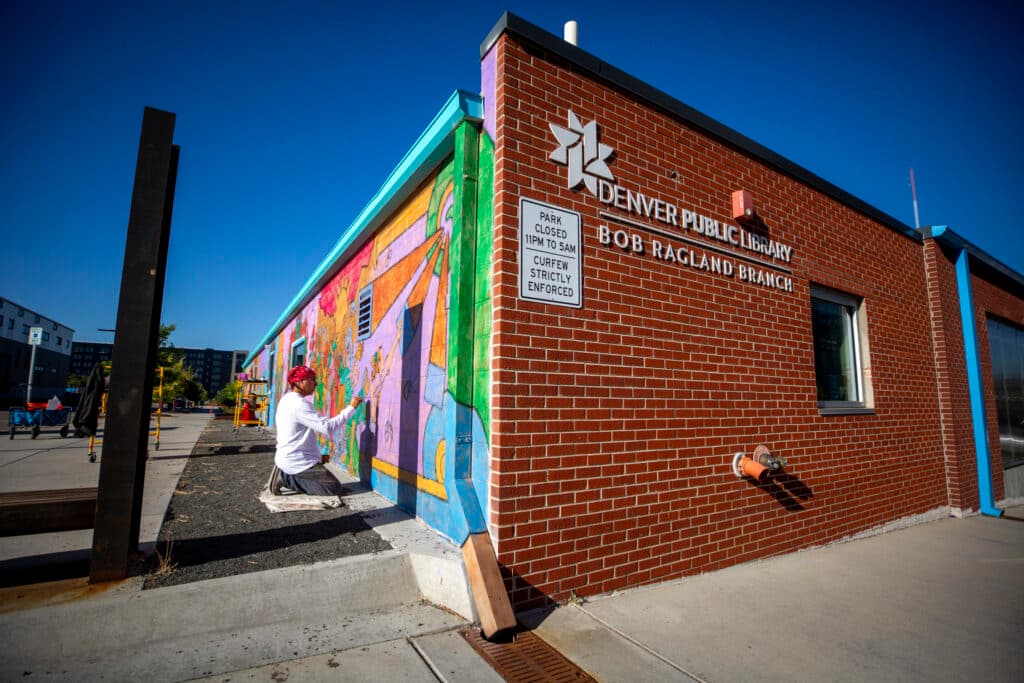
Ocelotl Garcia said the story loosely influenced Jim Garcia, the founder of the Tepeyac Health Clinic. When Garcia first had the idea for an affordable community health care clinic, the concept felt like a miracle. So he named the clinic Tepeyac.
“The story is such a Mexican sort of traditional thing,” Ocelotl Garcia said.
But when he was designing the mural for the clinic, he didn’t feel confined to that traditional narrative.
“All my energy went into using that original story as a reference,” he said, “but to tell the story that happened here that was inspired by that.”
Denver’s version of the Miracle of Tepeyac
There’s even a story of a miracle during the construction of the Tepeyac Health Clinic back in the '90s.
One of many volunteers who pitched in was an older man, suffering from arthritis, who offered his skills as a cement worker.
“One of the days he was out there working, he had this really magical experience,” Ocelotl Garcia said. “There was this strong smell of roses, and he couldn't tell where it was coming from. It was just this profound smell of roses.”
Modern-day legend has it that the next day, his arthritis was gone.
Ocelotl Garcia said Jim Garcia told him this story when he first started working on the mural.
“I was just like, ‘That has to go in there,’” Ocelotl Garcia said. “That's what murals are for. They're not just necessarily literal interpretations. They're to create inspiration.”
Ocelotl Garcia calls his style “abstract imaginism.”
“I love telling stories in my murals,” he said. “For me, murals are very narrative.”
As he was designing “El Milagro,” Ocelotl Garcia spent time with the Tepeyac community.
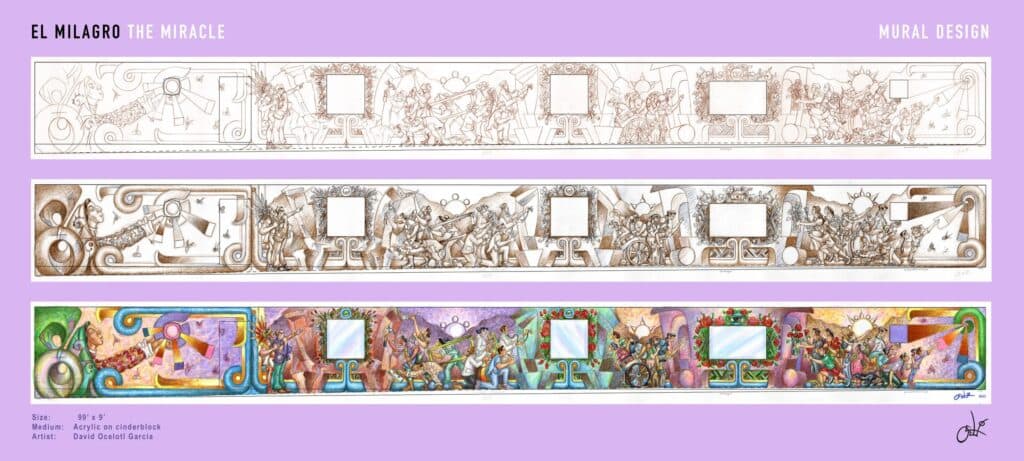
“I did a photo shoot with some of the founding members, and then I walked around the clinic and took photos of the doctors and everybody that allowed me to photograph them,” he said.
He planned to use their likeness in the painting. But, with a twist.
“I wasn't gonna literally use them, their character, in the mural,” he said. “If you were to find yourself or find some sort of likeness of yourself, you wouldn't necessarily be your real self.”
For example, “I would maybe use one of the doctors to be one of the people doing construction. So you don't know where you would end up in this mural… that was kinda fun.”
Ocelotl Garcia also loves that people see themselves in his work.
“I have had people come and say, ‘There I am!’ Or, ‘That's my aunt!’ Or ‘That's my uncle!’ And I think that's beautiful because I wanted people to see themselves in here and feel inspired and see their children and see their grandmas and grandpas. That, for me, is what this is all about.”
The death of a community mural
When the 2021 Tepeyac mural was created, a deal was made with the city of Denver.
“Under City of Denver Parks and Recreation guidelines, that mural had a three-year lifespan and was scheduled for replacement in 2024,” said Kiah Butcher, programs manager for RiNo Art District. “During the last DENVER WALLS festival, a new mural by Mr. B Baby was installed after the original’s expiration.”
That was news to Ocelotl Garcia.
“Denver Walls and RiNo were under the impression that (my mural) was temporary,” he said. “And I was always under the impression that it was permanent.”
Ally Grimm, muralist and director of Denver Walls, said she was also confused when the city gave her the “El Milagro” wall for the 2024 festival.
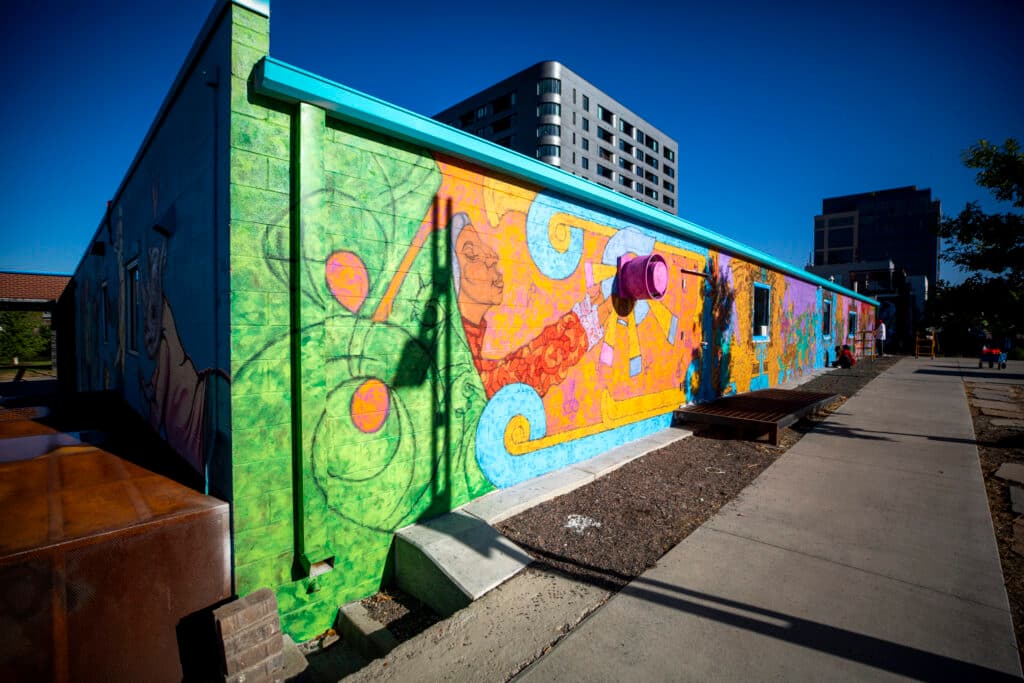
“When it came to David's wall, I asked many times, ‘Is he aware that this was getting covered?’” Grimm said. “In hindsight, I wish that I had reached out to him directly, but it was communicated to me many times that he knew this information.”
So, Denver Walls proceeded to paint over “El Milagro,” per the city’s instructions. But as soon as the mural was replaced, the community took notice. And people were angry.
Mr. B Baby’s mural that went over Ocelotl Garcia’s was vandalized. People lashed out at Grimm.
“I received death threats,” she said. “I received threats to ruin everything I've ever made … It was an unnecessarily intense way to say, ‘Hey, you made a mistake.’”
“I'm not generally of the camp that (street) art should stay forever,” she said.
But knowing what she knows now, Grimm regrets covering it up.
“That mural always should have been a permanent piece of artwork.”
Righting the wrong
As soon as Grimm found out that Ocelotl Garcia didn’t know that his mural was going to be erased, she said, she took action.
“My immediate response was, ‘We are gonna facilitate you getting this back and we're gonna make it permanent.’ And that's how we're gonna move forward because we made a mistake in doing this,” she said.
In light of the community blowback, the city was on the same page: restore “El Milagro” and add it to Denver’s permanent collection.
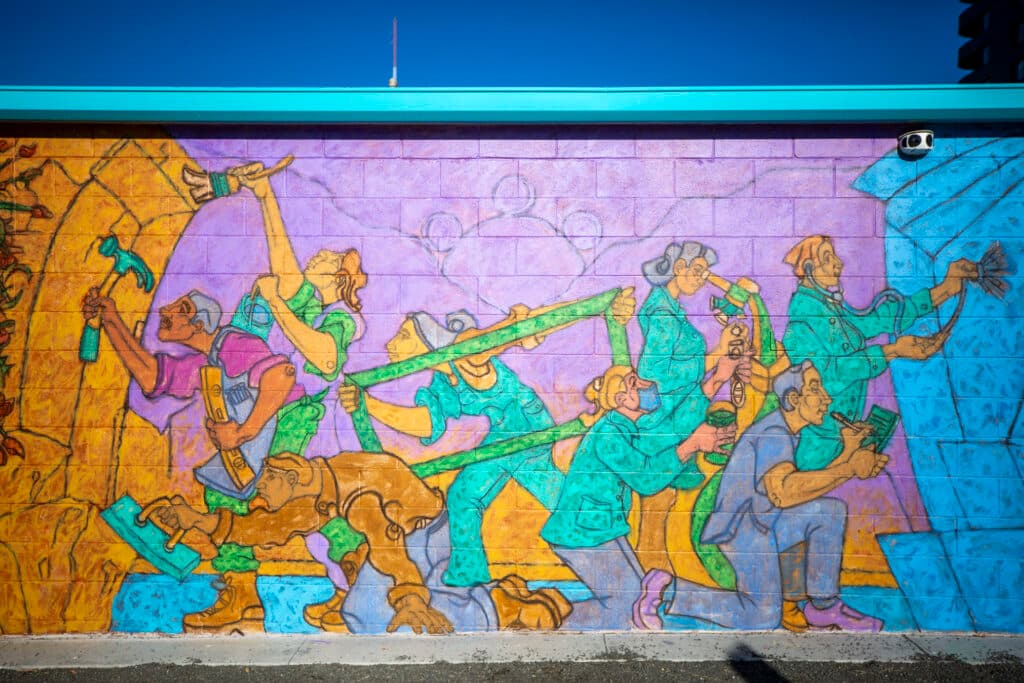
Butcher said the incident also started a conversation about how to “find a path that better honors culturally significant public art.”
It wasn’t in the budget to restore the original mural, Grimm said. So Ocelotl Garcia has to repaint the work from scratch.
The project, which is currently in the works, is being funded through RiNo’s public art program, with support from Denver Walls.
Lucha Martinez de Luna, founder of the Chicano/a Murals of Colorado Project – an organization fighting to preserve community murals – said the reparations feel adequate.
But, for her, the incident “represented so much more than just a misunderstanding.”
'A lot of these communities where these murals were originally painted have been undergoing extreme displacement and gentrification.'
That’s what hurts, Martinez de Luna explained.
She said it’s another instance, like many other Chicano/a mural erasures that came before, that represents a lack of awareness and respect for the role that these works play in the community.
“The community mural movement really started during the Civil Rights Movement,” Martinez de Luna said. “At that time, there still wasn't any type of representation in the art museums and in cultural institutions. So a lot of these murals were really fundamental in terms of empowering the communities.”
When murals with community significance are erased, it feels like yet another slight to these marginalized histories.
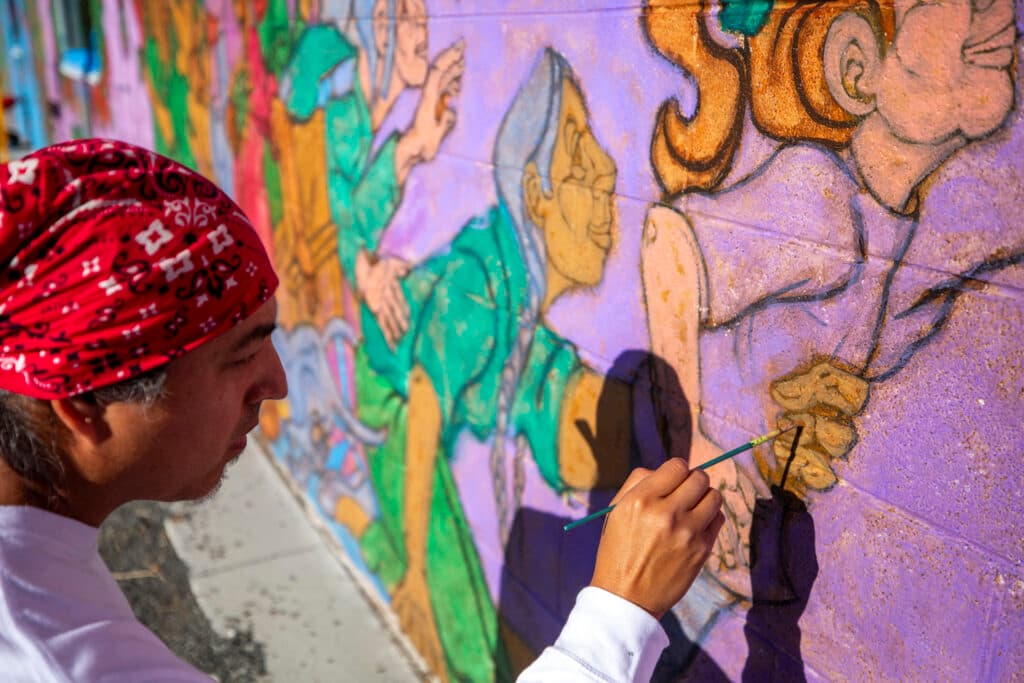
But as “El Milagro” is restored, Martinez de Luna and Ocelotl Garcia hope people will continue to learn about the significance of work and other community murals around the city.
When the recreation of “El Milagro” is finished, Ocelotl Garcia said there will be a plaque with a QR code and a description of the work.
"This mural doesn’t just belong to Tepeyac. It belongs to the community that was responsible for the founding of Tepeyac and that has supported us for more than 30 years,” clinic founder Jim Garcia said. “This restoration honors our community's collective strength and spirit. It is a powerful affirmation that our stories matter and will continue to inspire future generations."
The restoration is currently taking place, with a projected completion date near the end of October. You can visit “El Milagro” on the east side of the Bob Ragland Library in the RiNo Art Park, at the corner of 35th Street and Delganey Street.
Related stories
- Lucha Martinez de Luna is on a mission to preserve Denver’s Chicano/a art work
- Some local Chicano murals are being recognized nationally as endangered — which could help preserve them
- The destruction of a memorial mural paints a picture of gentrification in Five Points for the community behind it
- ‘Confluent People,’ a mural honoring generations of Denver history, is being restored
- Denver’s cataloguing its Latino and Chicano history through places and buildings
